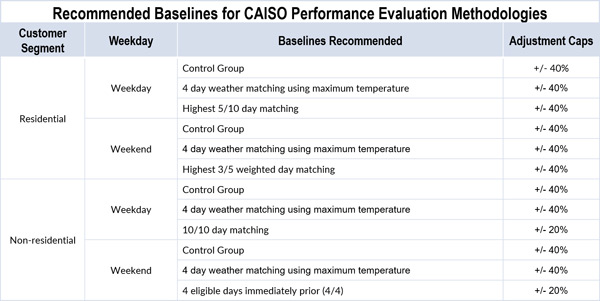By Jason Fordney
CAISO finalized a set of updates to its proposed policies on demand response and distributed generation, saying there is strong stakeholder support for the new rules to be presented to the Board of Governors in July.
The grid operator has been working on three related but distinct proposals regarding DR, non-generator resources and multiple-use applications. (See CAISO Proposes Rules for Distributed Resources, Storage.)
An incremental approach would be best as CAISO learns from the changes stemming from the policies and their influence on generation resources and grid operations, the ISO said in a draft final proposal on “Energy Storage and Distributed Energy Resources (ESDER) Phase 2.”
“The ISO will continue collaborating with stakeholders on the remaining ESDER 2 topics in a phased policy approach that is appropriate in a rapidly evolving market environment that currently does not have a clear end state,” CAISO said.
The board next month will review finalized proposals for alternative baselines, distinguishing between charging power and station power for energy storage resources, and changes to the threshold price for DR, among others.
For DR, a baseline analysis working group developed enhancements to the method whereby proxy DR resources are evaluated. The ISO has finalized the alternative baselines, which are designed to improve the accuracy of DR performance calculations. CAISO said there has been “overwhelming” support for the alternative baseline proposal.
The ISO currently relies on a “10-in-10” baseline methodology that works well for many large commercial and industrial customers but not for all customer types, leading to the development of a new approach.
Using the 10-in-10 methodology, the ISO calculates a baseline by examining the 45 days prior to a trade date and finding 10 “like” days in which no DR was required. It then uses hourly average meter data to create a baseline representing a typical load profile, and the resource is paid for reducing usage below the baseline.
Under the new proposal, baselines for residential resources would be based on a four-day weather match that estimates what electricity use would have been in the absence of DR dispatch under similar weather and on similar days, using a control group of similar users.
Commercial baselines would be based on the 10-in-10 method with a 20% adjustment cap, an average of the previous five days and a control group. Baselines are adjusted using actual load data in the hours preceding a DR event to better reflect variables that might not appear in the historical data.
The stakeholder process showed that station power is a retail issue, CAISO said, and listing specific functions for wholesale and retail functions is not the best approach.
“The CAISO believes that it is prudent to simplify the definition of station power to energy for operating the electrical equipment of an energy resource subject to a retail tariff, as defined by the local regulatory authority,” CAISO said. This definition would be consistent across regulatory authorities and avoid conflicts if the California Public Utilities Commission changed its definition of station power.
The ISO is also proposing to expand the list of gas price indices available for use in the calculation of DR benefits. This allows the DR “net benefits test” to recognize Energy Imbalance Market (EIM) entities outside of the state that want to participate as DR in the CAISO market.
The policy issues discovered in the process will affect the EIM if DR or distributed energy resources are used. The EIM Governing Body will review the proposal on July 13 in its advisory role.



